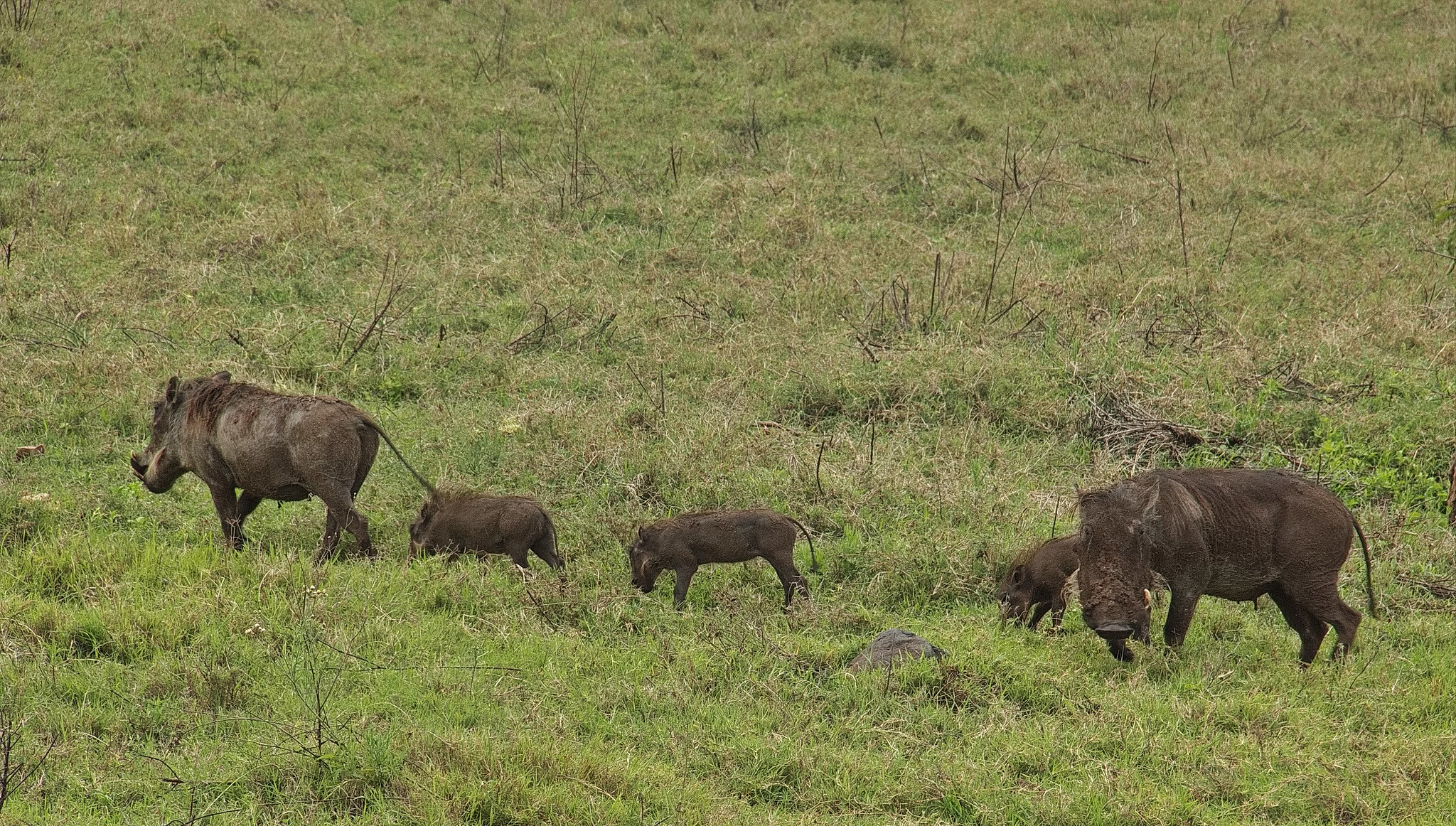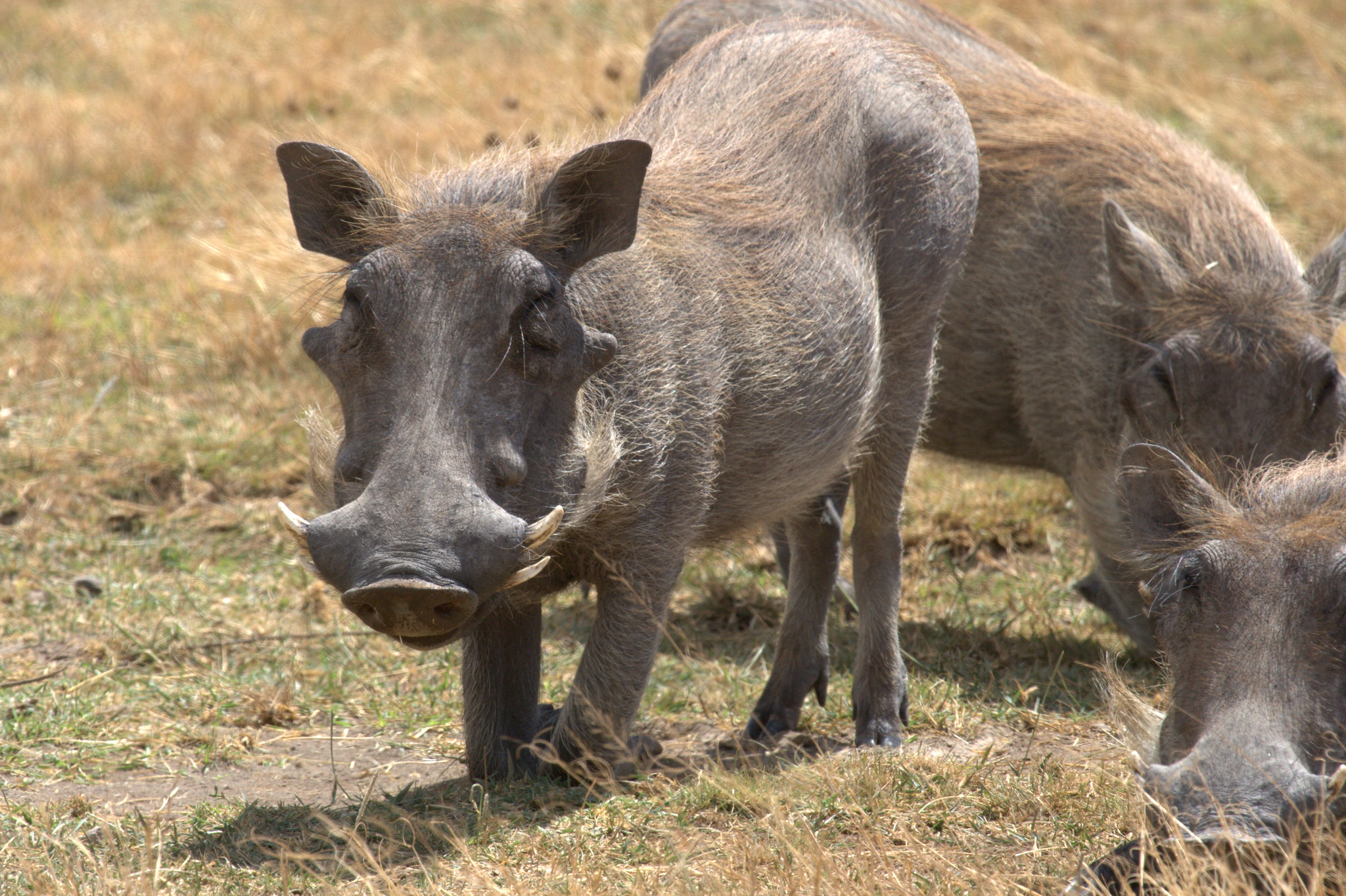10 Fun Facts About Warthogs
10 Fun Facts About Warthogs. Wild pigs or warthogs are land-based animals. These animals are medium-sized. They have thick bodies, big heads, and tusks that curve upwards. You can find them all over Tanzania, mostly in savannas, fields, and forests.

1. Warthogs are not wild boars
Even though they come from the same ancestors, warthogs and wild boars are two different kinds. Boars in the wild are bigger and have thick, bristly coats that can be dark gray, brown, or black. Their tusks are usually sharper and not as noticeable as those of African elephants. They also live in a wider range of ecosystems, such as woods, farmland, and areas near cities in Asia and Europe.
2. There are two warthogs in Africa.
That’s where the common warthog (Phacochoerus africanus) and the desert warthog (Phacochoerus aethiopicus) live together. The main difference between these two species is how they have changed to live in their different surroundings. The common warthog lives in a wide range of African settings and has adapted to living in both wet and dry places. Unlike other warthogs, the desert warthog only lives in dry areas.
3. The tusks of warthogs are teeth
The tusks on warthogs are probably the thing that makes them stand out the most. These things are the animal’s long upper and lower canine teeth, which keep getting longer as the animal lives. There are two main pairs. The longer ones can grow up to 25 inches (0.64 m) long. The bottom set is smaller, but the edges are sharper. Animals use both tusks to dig for roots and vegetables and to protect themselves from enemies and predators.
4. They feed on opportunistic omnivores
As grazers, warthogs eat various plants and animals to get the most out of the food they find. Warthogs primarily consume plants, especially during the wet season when these are more abundant. During the dry season, warthogs eat roots, bulbs, and vegetables. They do this by kneeling down and digging. Finally, warthogs are opportunistic eaters, which means they will eat dead animals whenever they get the chance. This practice includes eating dead animals, bugs, and small mammals.
5. They don’t really have warts
What gives warthogs their name are thick skin growths on their faces, not warts. The look and distribution of these so-called warts differ from actual warts. People think that the ones on the face, especially around the eyes, protect the bearer during fights with other men or predators. Because the warthog’s skin is so tough, the warthog’s face warts can help protect it from wounds or bites.
There is an odd way for warthogs to protect themselves.
When warthogs run away from danger, they do something strange: they run with their tails straight up in the air. Researchers think that the tail helps keep family groups together when they run quickly through thick grass (they can reach speeds of up to 34 mph, or 55 km/hr. Additionally, their straight tails may confuse or distract predators.
7. They use abandoned tunnels
While many mammals dig their homes, warthogs live in holes that other animals, especially aardvarks, have left behind. The main purpose of these holes is to protect animals from the weather and, more importantly, to keep them safe from lions, leopards, and hyenas. It’s fascinating that warthogs back into their burrows when they go inside, which helps them protect themselves from possible predators.
8. Warthogs like getting wet.
Warthogs like to roll around in the mud, which is beneficial for them in more than one way. This one keeps the body’s temperature stable. It can get scorching in the African desert, but the thick mud naturally cools things down. When the mud dries, it forms a layer on top of the skin that blocks the sun’s rays and gives long-lasting comfort. As a natural sunscreen, the mud also protects the face from the sun, which can burn warthog skin. Lastly, mud helps get rid of parasites. When it dries and flakes off, ticks, fleas, and other bugs that may have been on the warthog’s skin come off with it.
9. A Warthog Family is a Good One
Warthogs are known for being very close to their families and friends. Foraging females and their young usually live together in groups called sounders. These family units can join together, which makes things safer and allows people to connect with each other more. Women are usually in charge of Sounders, and the oldest and most experienced sow is usually in charge. Male warthogs, also known as boars, tend to live alone more. They either roam by themselves or with other men in groups called “bachelor groups.” During mating season, however, males join sounders as satellites and compete for the attention of females that are ready to mate.
10. They have a lot of babies
Warthog litters can be any size, but most have between two and six babies. There have been cases where as many as eight piglets were born. Compared to other ungulates, these babies are pretty well grown when they are born. Their eyes are open, and they can already move around. Because they grow so quickly, they can follow their mother out of the burrow to feed and learn important survival skills right away. Usually, sows will nurse and watch over babies from other family members in the sounder.
In conclusion, those are the 10 Fun Facts About Warthogs.
Warthog Quick Facts
• Phacochoerus africanus is its scientific name.
• Name in the wild: Common Warthog
• Size: between 3 and 4.9 feet long; weight: between 110 and 330 pounds
• In the wild, they can live up to 15 years.
• Omnivore: eats plants, roots, fruits, and sometimes small animals
• African savannas, fields, and forests are where they live.
• Status of the conservation: least concern


















